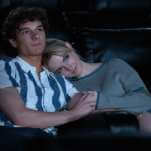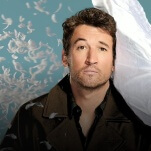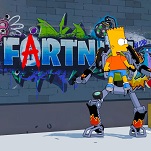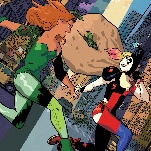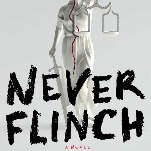However, DC boldly lifted elements from the Black Bat for both Doctor Mid-Nite, and Batman villain Two-Face. (Marvel later used a similar backstory for Daredevil.) Black Bat was relaunched by Clockwork Comics in 2011, but that same year DC used the name Black Bat as a new identity for former Batgirl Cassandra Cain.
Thing we were happiest to learn: The pulps attracted some top-notch authors. While pulps paid less than books or glossy magazines, they could be a stepping stone to better work. They also paid in advance, so many authors used them as a means to supplement their income, or buoy a flagging career. At one point, Upton Sinclair wrote 8,000 words a day for pulps, often writing under multiple aliases so the magazines could run several stories by the same author without seeming monotonous. Unsurprisingly, an A-to-Z of sci-fi writers appeared in the pulps—Asimov, Bester, Clarke—but you could also read work by Agatha Christie, William S. Burroughs, C.S. Forester, F. Scott Fitzgerald, Rudyard Kipling, and even Mark Twain. The first American to win the Nobel Prize for Literature, Sinclair Lewis, got his start editing and writing filler material for a pulp called Adventure.
Thing we were unhappiest to learn: Like pretty much everything in the first half of the 20th century, the pulps could be pretty racist. The Yellow Peril was a persistent theme in adventure stories, typified by villains like Fu Manchu, a series that was actually halted by the U.S. State Department during WWII for fear of alienating China, an important ally in the fight against Japan. (The Chinese embassy had also complained about the 1932 film The Mask Of Fu Manchu, which includes a scene of pan-Asian stereotypes plotting to “kill the white men and take their women.”
But there was plenty of room to offend all races, as many pulp series told of adventures in far-off lands, often with results that, let’s say, didn’t age well. Biggles, a series about a dashing pilot, had an Indian-raised, Hindu-speaking hero, with multiethnic allies whose portrayal was about as positive as you could expect for the times. But Biggles also had a rogues’ gallery of regrettable stereotypes, as the residents of nearly any far-flung locale could and would be portrayed as “savages.”
One area where the pulps were ahead of their time, socially, was in publishing gay-themed fiction. Because pulps weren’t considered “serious” literature, they escaped censorship to some degree, as their content was expected to be lurid. As a result, pulps were one of the only places you could read about gay and lesbian characters in pre-war America. To satisfy the censors, and the era’s cultural mores, the stories were almost universally cautionary—the heroes either ended up committed or dead (or magically turned straight) by story’s end. Still, pulp publishers churned out gay-themed stories, less out of altruism than because there was money to be made from a market that most of the country refused to acknowledge.
Also noteworthy: While the pulps themselves didn’t survive past the 1940s, many of their characters have. As 21st-century culture seems to be devoted almost solely to remaking things from the 20th, pulp staples like Conan The Barbarian, John Carter Of Mars, Tarzan, and Zorro have all seen recent (or pending) updates. Can a gritty reboot of Dan Turner, Hollywood Detective be far behind?
Best link to elsewhere on Wikipedia: While the ranks of pulp authors were almost entirely male, there are notable exceptions. Leigh Brackett began writing in her mid-20s, at the end of the pulp era. She was a prolific science fiction author, publishing dozens of short stories and 11 sci-fi novels, but it was one of her hard-boiled detective novels, No Good From A Corpse, that attracted the attention of Hollywood. She was tapped to adapt Raymond Chandler’s The Big Sleep, and wrote the screenplay alongside future Nobel laureate William Faulkner and Oscar winner Jules Furthman. This led to a second career as a screenwriter, writing big-screen adventures like Rio Bravo, El Dorado, and Robert Altman’s remake of The Long Goodbye. She died of cancer in 1978 while working on a first draft for The Empire Strikes Back, which was completed by Lawrence Kasdan.
Further down the wormhole: The lurid tales told in pulp magazines were very much on Quentin Tarantino’s mind when he wrote Pulp Fiction. While fans have long speculated on the contents of the mysterious briefcase that appears throughout the film, the director insists that the contents are besides the point—the case exists purely as a MacGuffin. Alfred Hitchcock popularized that term, for an object in a film that is only significant because several characters want it, and that desire drives the plot. A similar term is a Big Dumb Object, a sci-fi term for a mysterious object that exists to generate a sense of wonder in its audience. One such object—the Dyson sphere—has real-world scientific implications, which we’ll explore next week.











